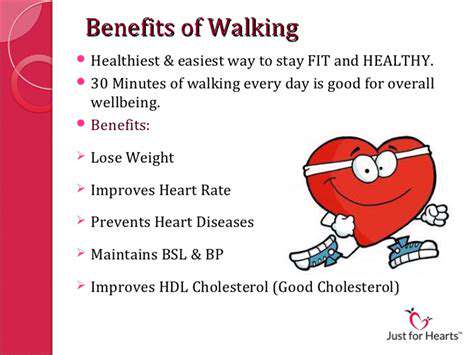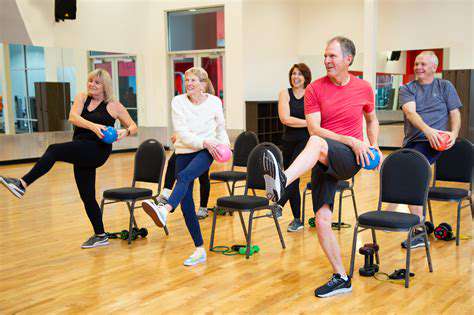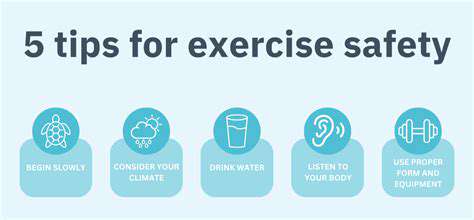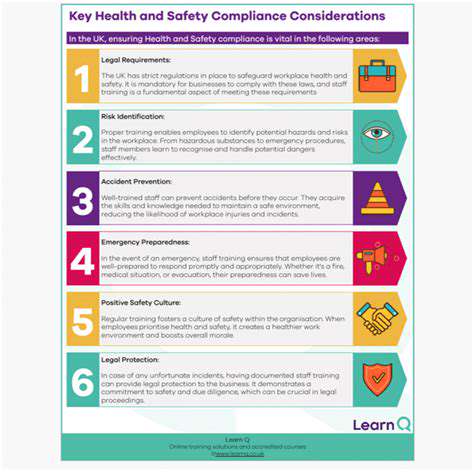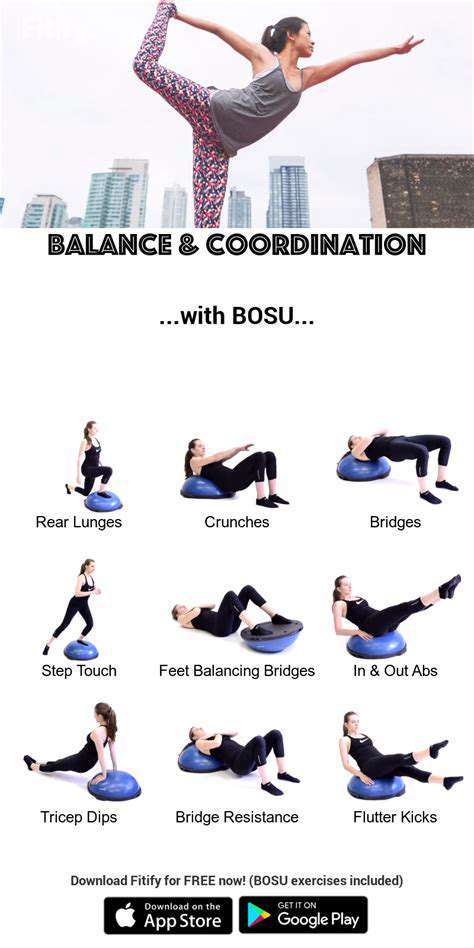Walking for Wellness: A Senior's Guide to a Healthier Lifestyle
Unlocking Physical Benefits: How Walking Boosts Senior Health
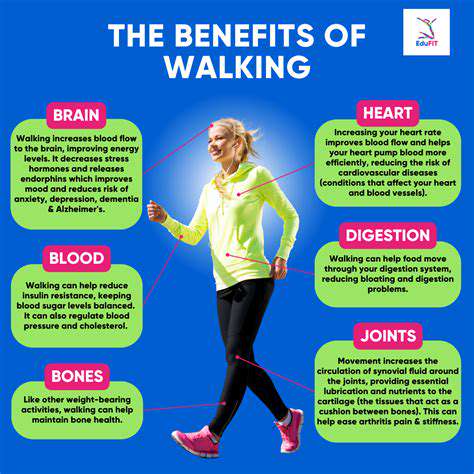
Unlocking the Power of Physical Activity
Engaging in regular Physical activity is crucial for maintaining overall health and well-being. Physical activity offers a wide array of benefits, impacting everything from cardiovascular health to mental clarity. It's not just about looking good; it's about feeling good and functioning at your best.
From brisk walks to intense workouts, incorporating movement into your daily routine can significantly improve your physical health. The benefits extend beyond the visible improvements, impacting your internal systems and overall vitality.
Boosting Cardiovascular Health
Regular physical activity strengthens the heart muscle, leading to improved blood circulation. This, in turn, reduces the risk of heart disease and stroke, two of the leading causes of death globally. Consistent exercise helps lower blood pressure and cholesterol levels, contributing to a healthier cardiovascular system.
Incorporating aerobic activities like running, swimming, or cycling into your routine can significantly improve your cardiovascular health, making your heart stronger and more efficient.
Strengthening Muscles and Bones
Physical activity, particularly weight-bearing exercises, plays a vital role in building and maintaining strong bones. This is especially important as we age, as it helps to prevent osteoporosis and fractures.
Strength training exercises, such as lifting weights or using resistance bands, build muscle mass, which is essential for maintaining strength and balance. Strong muscles support your joints and help you perform daily tasks with ease.
Improving Mental Well-being
Physical activity has a profound impact on mental well-being. Exercise releases endorphins, natural mood boosters that can help alleviate stress, anxiety, and depression. Engaging in physical activity can also improve sleep quality and cognitive function.
Regular exercise can significantly reduce feelings of stress and anxiety, promoting a sense of calm and well-being. It's a powerful tool for managing mental health, alongside other therapeutic approaches.
Managing Weight and Reducing Risk of Chronic Diseases
Physical activity is an essential component of any weight management plan. It helps burn calories, increasing your metabolism and promoting fat loss. This is particularly important for preventing obesity and its associated health problems.
Beyond weight management, regular exercise helps reduce the risk of developing chronic diseases, such as type 2 diabetes, certain cancers, and arthritis. Making physical activity a daily habit can significantly improve your long-term health prospects.
Enhancing Flexibility and Balance
Incorporating stretching and balance exercises into your routine can significantly improve your flexibility and balance. These exercises help improve your range of motion, reduce stiffness, and prevent falls, especially as we age.
Activities like yoga and tai chi are excellent for improving flexibility and balance. These practices not only enhance physical capabilities but also promote mindfulness and stress reduction.
Tailoring Your Walking Routine for Maximum Impact
Understanding Your Baseline
Before embarking on a new walking routine, it's crucial to understand your current fitness level and any pre-existing health conditions. This baseline assessment is essential to tailor a program that's both effective and safe. Acknowledging your limitations and gradually increasing intensity will help you avoid injuries and build a sustainable walking habit. Consider factors such as your current mobility, any joint pain, and any cardiovascular limitations. Honest self-assessment is the first step in creating a walking program that complements your overall health goals.
A conversation with your doctor is also highly recommended. They can offer personalized advice based on your medical history and provide guidance on safe exercise limits. This ensures your walking routine aligns with your individual needs and minimizes any potential risks. Remember, consistency is key, but prioritizing safety is paramount in a walking program, especially for seniors.
Gradual Progression and Consistency
Building a walking routine for maximum impact involves gradual progression. Rushing into a high-intensity workout can lead to injuries, discouraging you from continuing. Start with shorter walks at a comfortable pace, gradually increasing the duration and intensity over time. Listen to your body; rest when needed and adjust your routine based on your physical response. Consistency is vital for seeing results and building endurance. Aim for regular walks, even if it's just for 15-20 minutes a few times a week, and gradually increase the frequency and duration as you feel more comfortable.
Finding a walking buddy or joining a walking group can significantly enhance motivation and consistency. Social interaction and shared goals can encourage you to stick to your routine. Furthermore, having a support system can provide accountability and help you stay on track.
Incorporating Variety and Challenges
To maximize the impact of your walking routine, incorporate variety and challenges. This could involve walking on different terrains, such as hills or trails, to work different muscle groups and improve cardiovascular fitness. Varying your pace—walking at a brisk pace for intervals—can also increase the workout's intensity. Adding resistance exercises, like using hand weights or resistance bands while walking, can boost strength and endurance. This progressive approach to exercise will help you continue to challenge yourself and maintain motivation.
Exploring different walking routes and environments can make your walks more enjoyable and engaging. Finding scenic routes or incorporating nature into your walks can be a great way to stay motivated. Also, setting realistic goals and celebrating your progress can keep you motivated and focused on achieving your fitness goals.
Building a Sustainable Walking Habit: Tips for Long-Term Success

Understanding the Benefits of Walking
Walking is a simple yet incredibly effective form of exercise that offers a wide array of physical and mental health benefits. Regular walking can significantly improve cardiovascular health, reducing the risk of heart disease and stroke. It also helps maintain a healthy weight, strengthens bones and muscles, and improves balance and coordination. Furthermore, incorporating walking into your daily routine can boost your mood, reduce stress and anxiety, and improve sleep quality.
Beyond the physical advantages, walking also promotes mental well-being. The act of moving your body and being present in the moment can help clear your mind, reduce stress, and improve focus. Numerous studies have shown a strong correlation between regular physical activity, including walking, and enhanced cognitive function.
Planning Your Walking Routine
To establish a sustainable walking habit, it's crucial to create a personalized plan that aligns with your lifestyle and goals. Begin by setting realistic and achievable goals, such as walking for 15-30 minutes a day, a few times a week. Gradually increase the duration and frequency as you become more comfortable. Consider factors like your current fitness level, available time, and preferred walking environment when designing your routine.
Choose a time of day that works best for you and try to stick to it as consistently as possible. A consistent schedule will help you integrate walking into your daily routine and make it a habit.
Choosing the Right Walking Gear
Investing in comfortable and supportive footwear is essential for a safe and enjoyable walking experience. Proper footwear reduces the risk of injuries and allows you to walk for longer periods without discomfort. Consider factors such as arch support, cushioning, and breathability when selecting your walking shoes.
Comfortable clothing that allows for proper movement and ventilation is equally important. Opt for moisture-wicking fabrics to help keep you cool and dry during your walks. In colder weather, layers of clothing can provide warmth and flexibility.
Incorporating Walking into Your Daily Life
Finding opportunities to incorporate walking into your daily routine can make it easier to maintain a consistent walking habit. Consider taking the stairs instead of the elevator, parking further away from your destination, or walking during your lunch break. These small changes can accumulate over time, significantly increasing your overall walking activity.
Walking with a friend or joining a walking group can also increase motivation and make the experience more enjoyable. Social interaction can be a great motivator and help you stay committed to your walking routine.
Creating a Motivational Environment
To maintain a sustainable walking routine, cultivate a supportive and motivating environment. This could include setting reminders on your phone, listening to inspiring podcasts or music, or keeping a walking journal to track your progress and celebrate milestones. Visual reminders like motivational posters or quotes can also serve as a source of inspiration.
Overcoming Challenges and Staying Motivated
Establishing a sustainable walking habit requires consistent effort and persistence. Expect some challenges along the way, and have strategies in place to overcome them. If you experience setbacks, don't get discouraged. Simply acknowledge the setback, identify the cause, and adjust your routine accordingly.
Finding ways to make walking enjoyable is key to maintaining motivation. Explore different walking routes, try new trails, or listen to your favorite music or podcasts while you walk. Remember, consistency and enjoyment are key to making walking a lifelong habit.


